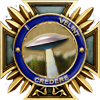Great article, if anyone is interested in reading about the type of work I do and the type of thing I'm excited about AI helping out with in the future.
Snippet:
 www.geoweeknews.com
www.geoweeknews.com
Snippet:
Traditional Machine Learning Classification
Hexagon’s point cloud classification is based on deep learning where the point cloud is input to a neural network. However, there were simpler, and less efficient machine learning techniques used in the past. To contrast the new and old methods, Metzler offered the following explanation:
“Let me first explain traditional methods of machine learning,” said Metzler. “Traditional machine learning is based on hand-crafted features, e.g., red, green, blue, planarity, linearity, etc. In total, maybe 64 different features. For each point these features are computed, which results in a feature vector with 64 values. For example, if we made a graph of 2D feature space, with green, bottom to top, and planarity from left to right, we would expect that a point belonging to vegetation with little planarity would be in the upper left quadrant. Repeating this for many points we would expect that all of most vegetation points would cluster in that region of the graph (see Figure 1).
Figure 1 - An example of a traditional method of machine learning classification. | Source: Hexagon
“For human labelling of training data, we know that the correct answer for each colour/planarity pair,” said Metzler. "The 'traditional' machine learning algorithm is now based on this data, deciding best where to put the clusters by drawing a 2D line. In this simplified case (see Figure 2), the line defines the model as a result of the training process.”
Figure 2 - Resultant model from a traditional machine learning classification process. | Source: Hexagon
“When we apply this model to new data, we can compute, for example, for point features green and planarity. If it lies on the left side of the line, the resulting class is vegetation,” said Metzler. “If it is on the right side of the line, it could be a building. But in reality, we do not just have two features, but as many as 64. Then the line becomes a hyper-plane, splitting the volume into a 64-dimensional features space.”
Combinations of features could be evaluated in this manner. Per the example, green points with little planarity might be an indication for vegetation. However, colour would not necessarily add to the classification. Not all vegetation is consistently green (especially seasonally). It could also be a house, for instance, that has a green colour, or a green car, as those would have a higher level of planarity.
“We defined a set of features typical for each point and computed these,” said Metzler. “And then the algorithm had to determine, from a training process where we fed in a lot of point clouds, a correct prediction. From that, it finds out what are the important features for each class—it learns how to map input to output.”
That was how it worked in the past - machine learning at a rudimentary level.
The Essential Role of AI in Point Cloud Classification | Geo Week News
Traditional methods could never keep up with the increasing flood of rapid, high-density point cloud data. AI has come to the rescue.
- 1





















